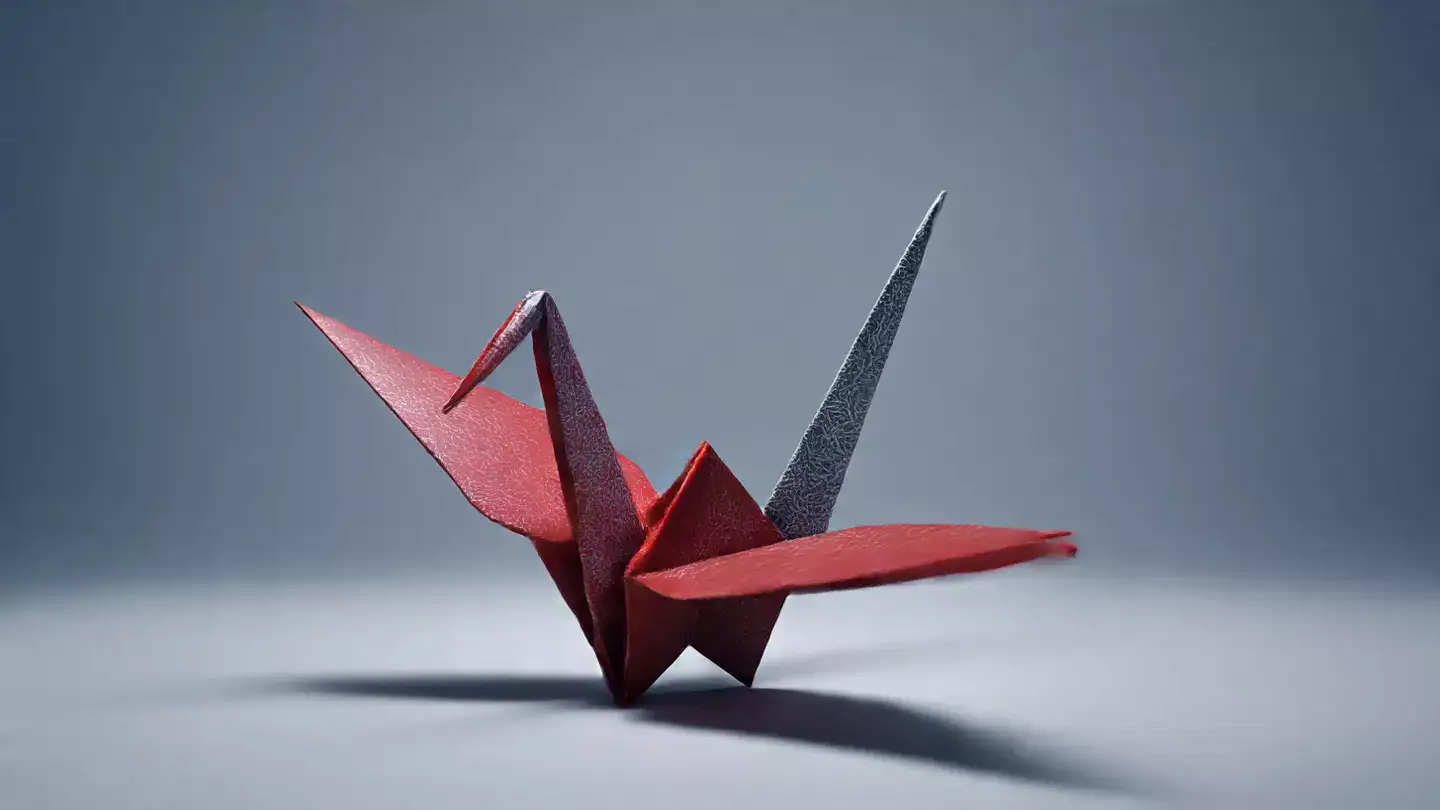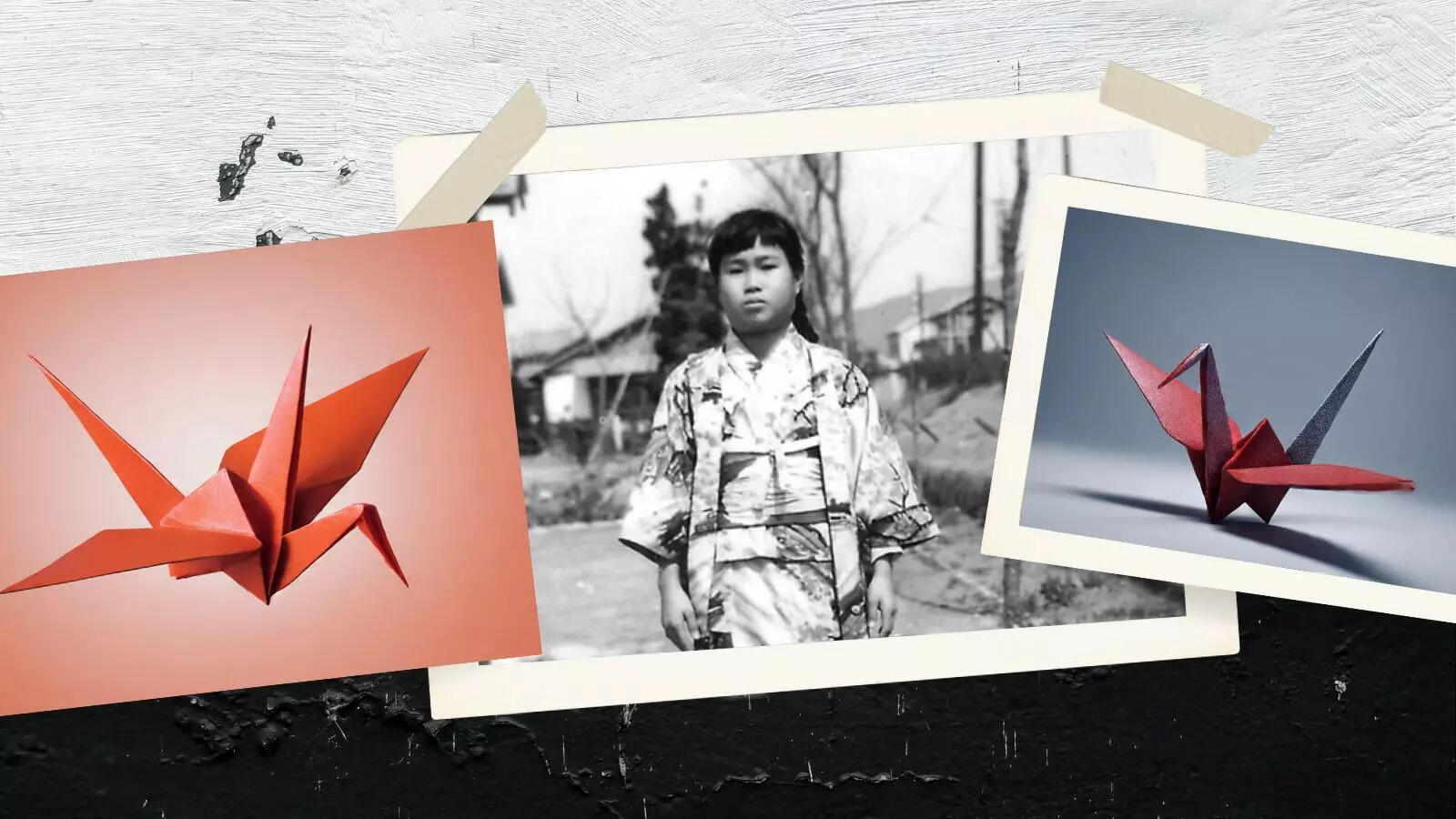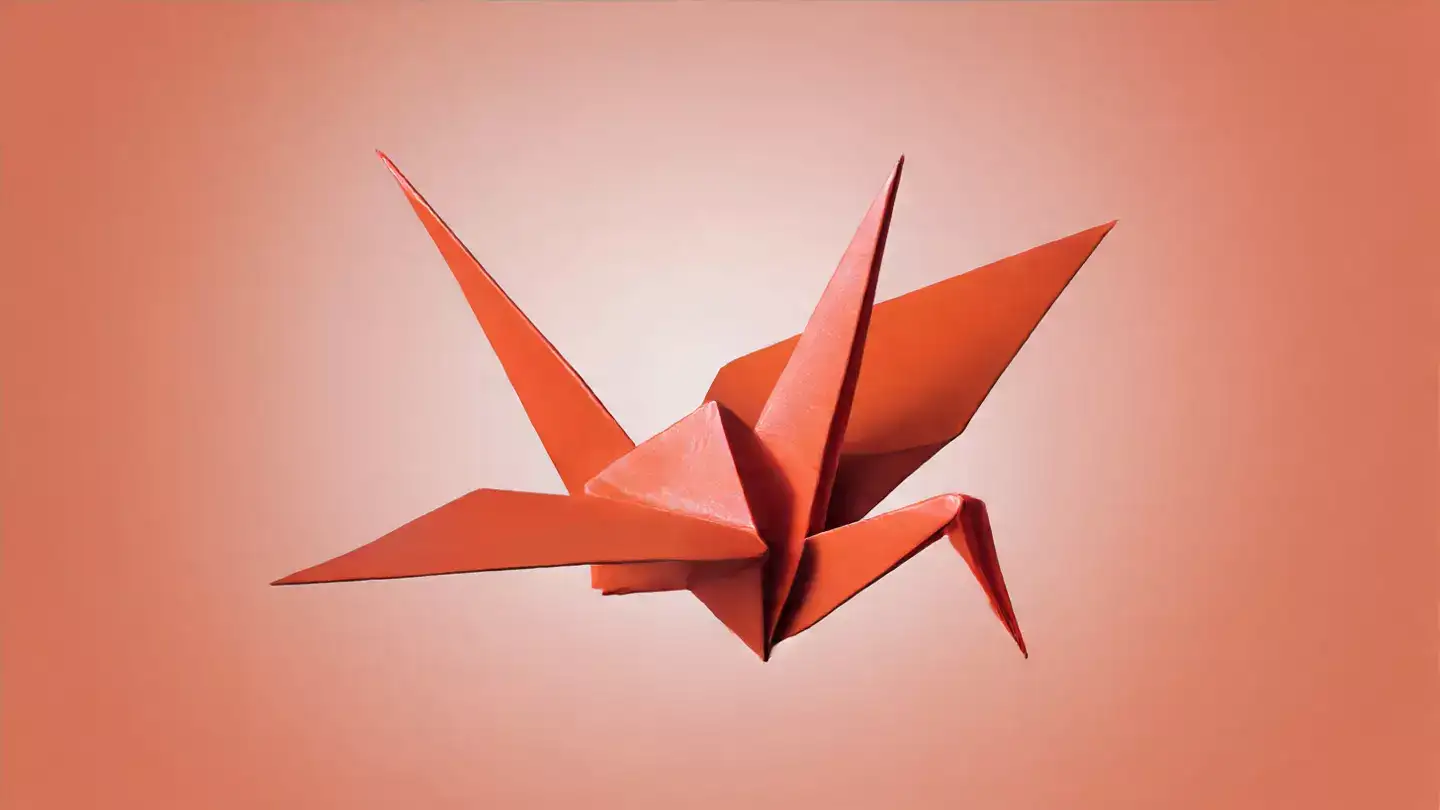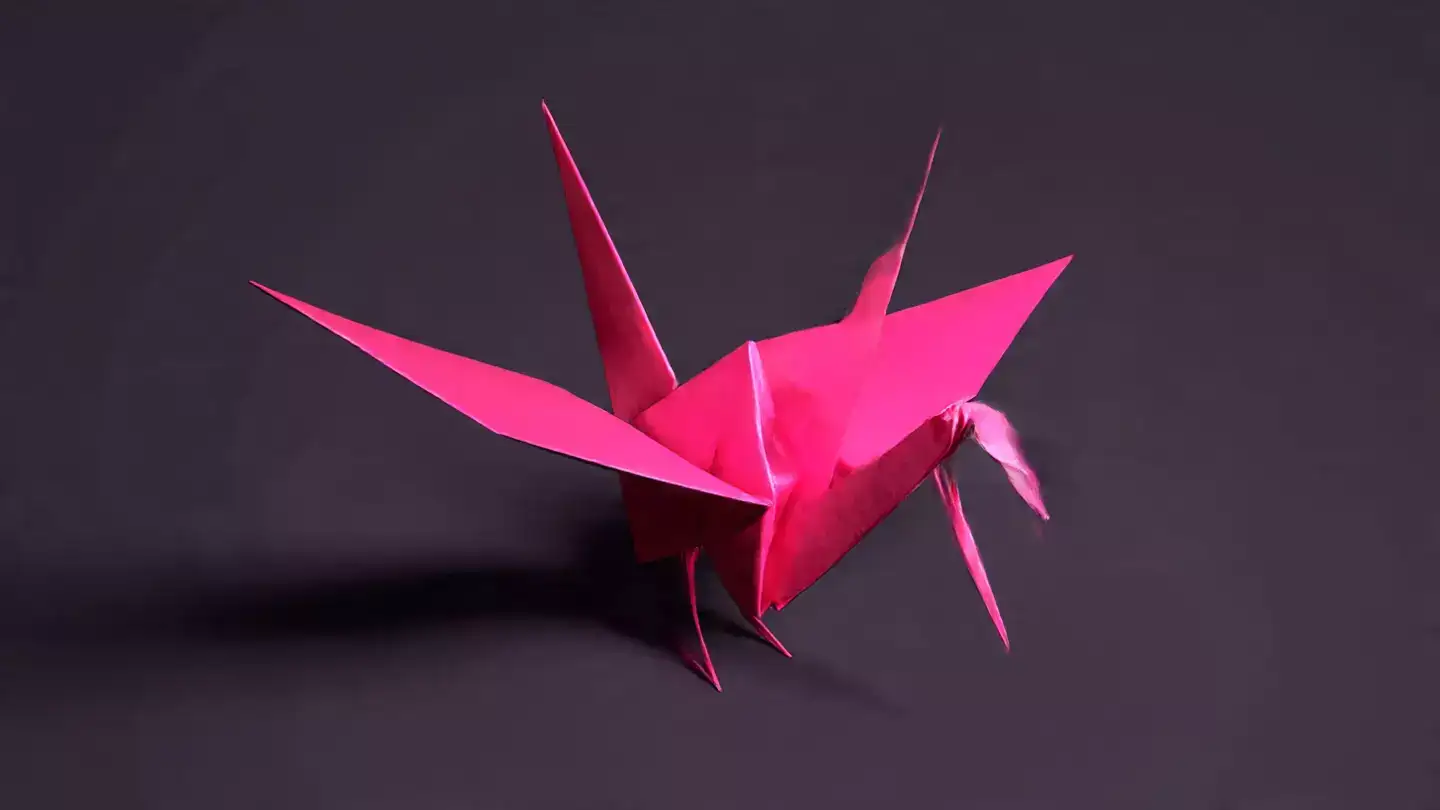How Sadako Sasaki’s Origami Paper Cranes Became Hiroshima’s Symbol Against Nuclear Tragedy
Each crease of folded paper tells a story — of patience, artistry, and hope. Origami, the timeless Japanese craft of paper folding, is more than an artistic pursuit; it carries deep emotional and cultural significance. As the world celebrates Origami Day on November 11, it’s worth remembering not just the beauty of the art but also its enduring symbol of peace, immortalised by the life of Sadako Sasaki, whose thousand cranes became a global emblem of courage and hope.
 Representative Image/ Credit: Meta AI
Representative Image/ Credit: Meta AI
 Representative Image/ Credit: Meta AI
Representative Image/ Credit: Meta AI
The tradition soon spread across continents. In Europe, intricate napkin folding became an aristocratic art during the 17th and 18th centuries, reflecting elegance and refinement. When Japan opened its borders in the late 19th century, its folding techniques merged with those from the West, shaping the origami we know today — a blend of art, discipline, and imagination.
Oppenheimer believed that folding paper was not merely a hobby but a form of meditation and connection. Under her influence, communities worldwide embraced the craft, leading to exhibitions, clubs, and competitions that keep the tradition alive today.
 Representative Image/ Credit: Meta AI
Representative Image/ Credit: Meta AI
According to experts and historical records, Sadako used every scrap of paper she could find — medicine wrappers, gift papers, even old notes — to create her cranes. Her dedication turned the act of folding into something transcendent: a child’s quiet plea for life, peace, and healing in the shadow of destruction.
Her cranes were later buried with her, and her story travelled across the world through books, schools, and peace memorials. Today, at Hiroshima’s Peace Memorial Park, stands a statue of Sadako holding a golden crane — a testament to her spirit and the universal desire for a world without war.
Modern origami has expanded beyond traditional cranes. Artists now create geometric wonders, life-like sculptures, and architectural forms, blending science and art. Yet at its heart, the message remains the same: transformation through patience and perseverance.
As we remember Sadako Sasaki and her thousand cranes, her story reminds us that even in moments of great suffering, hope can be shaped — one careful fold at a time.


The Art of Folding: From Sacred Rituals to Global Creativity
Origami, derived from the Japanese words ori (folding) and kami (paper), traces its roots to the 6th century when paper first reached Japan. Initially used in Shinto ceremonies and religious rituals, paper folding was considered sacred. By the 17th century, it had evolved beyond temples and found its place in homes and celebrations, becoming a cultural expression of creativity and mindfulness.
The tradition soon spread across continents. In Europe, intricate napkin folding became an aristocratic art during the 17th and 18th centuries, reflecting elegance and refinement. When Japan opened its borders in the late 19th century, its folding techniques merged with those from the West, shaping the origami we know today — a blend of art, discipline, and imagination.
Lillian Oppenheimer and the Modern Origami Movement
While origami has ancient roots, its modern resurgence owes much to Lillian Oppenheimer, born on November 11 — the very date now celebrated as Origami Day. She founded the first origami group in America and helped establish both Origami USA and the British Origami Society. Her passion transformed origami from a niche Japanese tradition into a global art form.Oppenheimer believed that folding paper was not merely a hobby but a form of meditation and connection. Under her influence, communities worldwide embraced the craft, leading to exhibitions, clubs, and competitions that keep the tradition alive today.

The Story of Sadako Sasaki: From Tragedy to Symbol of Hope
Origami’s most poignant story is intertwined with the life of Sadako Sasaki. Born in 1943, Sadako was just two years old when the atomic bomb fell on Hiroshima. Though she survived the initial blast, she was later diagnosed with leukaemia, the result of radiation exposure. During her hospital stay, she began folding paper cranes after hearing a legend that crafting one thousand cranes could grant a wish.According to experts and historical records, Sadako used every scrap of paper she could find — medicine wrappers, gift papers, even old notes — to create her cranes. Her dedication turned the act of folding into something transcendent: a child’s quiet plea for life, peace, and healing in the shadow of destruction.
A Thousand Cranes for Peace
Sadako’s determination inspired those around her. Friends and classmates brought her paper, and even as her strength faded, she continued to fold. Though popular stories claim she folded 644 cranes before her death, her family later confirmed she surpassed her goal, making over a thousand. She passed away in October 1955 at the age of twelve, surrounded by her loved ones.Her cranes were later buried with her, and her story travelled across the world through books, schools, and peace memorials. Today, at Hiroshima’s Peace Memorial Park, stands a statue of Sadako holding a golden crane — a testament to her spirit and the universal desire for a world without war.
Origami as a Symbol of Peace and Mindfulness
Origami continues to serve as a bridge between creativity and reflection. Experts say that the deliberate, mindful folding of paper helps calm the mind, improving focus and reducing anxiety. The crane, in particular, has become a universal emblem of peace, folded in remembrance of Sadako, and by countless others in hospitals, schools, and homes as gestures of hope.Modern origami has expanded beyond traditional cranes. Artists now create geometric wonders, life-like sculptures, and architectural forms, blending science and art. Yet at its heart, the message remains the same: transformation through patience and perseverance.
Honouring the Legacy on Origami Day
Celebrating Origami Day is not just about folding paper but about embracing the values it represents — peace, focus, and resilience. From ancient Japanese shrines to modern classrooms, origami teaches us that beauty and meaning can emerge from the simplest materials.As we remember Sadako Sasaki and her thousand cranes, her story reminds us that even in moments of great suffering, hope can be shaped — one careful fold at a time.
Next Story